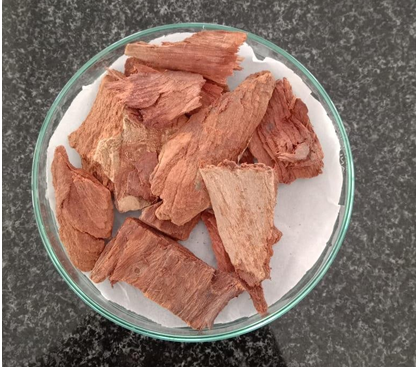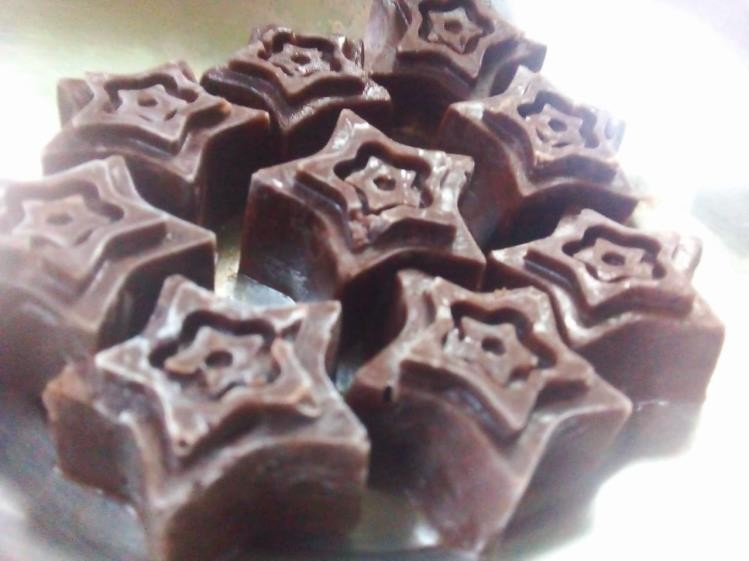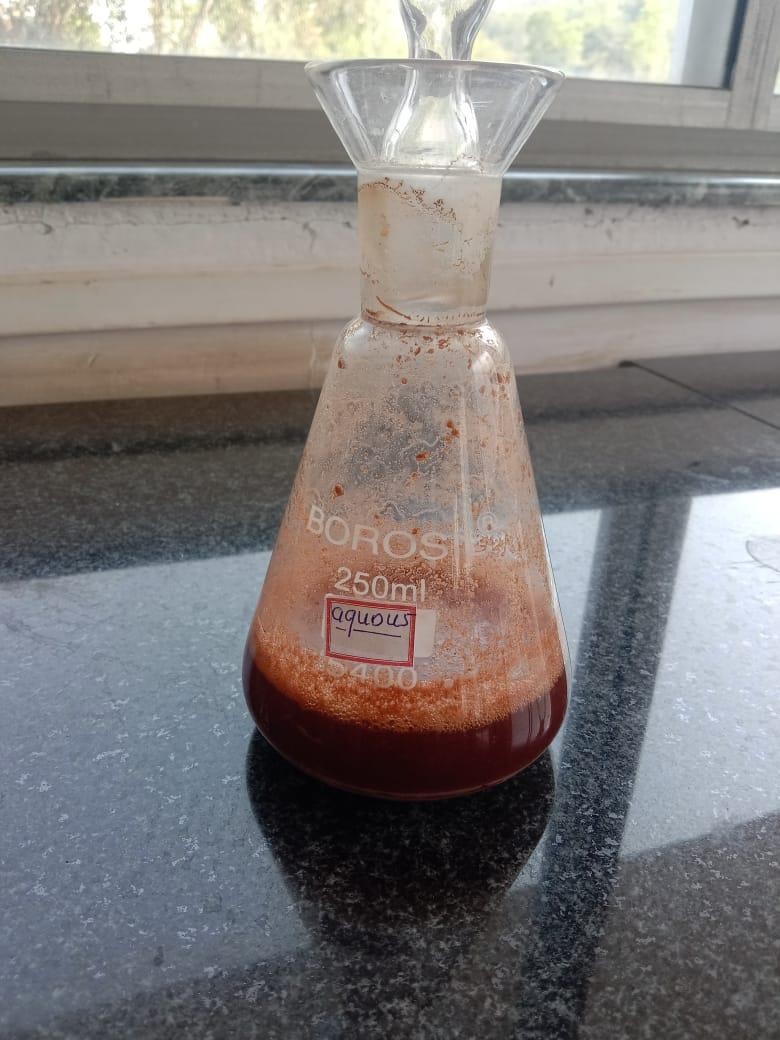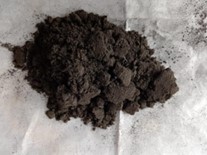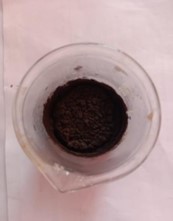Introduction
The primary objective of this research was to create and assess nutrition chocolate that contains a natural cardiac tonic. Our memories are essential to our individuality; even when it comes to situations we have experienced together, no two people's memories are exactly the same. Herbal formulations consist of one or more herbal preparations combined with an active ingredient, herbal preparation or herbal substance alone. Because of the health benefits of cocoa, chocolate-related products have been used as medicine for centuries in many cultures. Flavonoids, which function as antioxidants, lower blood pressure and balance specific hormones in the body, are largely responsible for these advantages. Compared to milk or white chocolate, which do not offer the same health benefits, dark chocolate has a significantly higher concentration of antioxidants.1, 2, 3, 4
Made from roasted and ground cacao seeds, chocolate can be consumed as a liquid, paste or block. It can also be used as a flavoring agent in other dishes. White chocolate, milk chocolate and dark chocolate are the three primary varieties of chocolate. Primarily composed of cocoa butter and it has positive effects on mood, stress management, cognitive function, cardiovascular disease and energy levels. Herbal formulations are dosage forms which contain one or more processed or raw herbs in predetermined amounts to offer targeted nutrition as well as serve the purpose for use in diagnosis, treatment or mitigation. Chocolates also show potential health benefits such as lowering blood pressure, altering blood flow to the brain, preventing cell damage, raising glucose levels, lowering the risk of a heart attack, raising HDL and lowering LDL cholesterol. Thus, the current study article focuses on the formulation and evaluation of a wholesome chocolate that contains powdered arjuna bark and can improve recipient memory and learning without causing any negative reactions.
Chocolate base is used to make medicated chocolate and the drug is then mixed into the base. The term ‘chocolate drug delivery system’ refers to the process by which the drug is released from the chocolate after being integrated into it. For kids, this is the best drug delivery method. The Terminalia arjuna is a native tree of Bangladesh that is evergreen and deciduous, reaching heights of 20 to 30 meters above ground. It belongs to the Combretaceae family. It is found in the Deccan, South Bihar, Madhya Pradesh, Delhi, Uttar Pradesh, and near ponds and rivers. Traditional Indian physicians used Terminalia arjuna powdered tree bark to treat heart conditions like ‘Hritshool’ (angina). All parts of the plant have been used for medicinal purposes since ancient times. T. arjuna supports heart health mitigates the harmful effects of stress and anxiety. Its stem bark contains glycosides, large amounts of flavonoids, tannins and minerals. Terminalia arjuna differs from other widely used medicinal plants due to its flavonoids anti-inflammatory, antioxidant and lipid-lowering qualities as well as its glycosides, cardiotonic qualities. Fruits are a tonic, juice acts as an antacid and bark powder boiled in water and inhaled can treat tooth worms and headaches. 5, 6, 7
This tree is shaped like a cone, with elliptic leaves that face different directions and white bark. Sap from the Arjuna tree is a milky white color. The flowers are yellowish and the fruits are smooth, fibrous and woody. Terminalia arjuna bark is currently marketed as a herbal preparation has been used for the treatment and prevention of a number of cardiovascular diseases, though the quality of those products is a cause for concern. The purpose of this study is to compare reference data with a few chosen samples of commercially available Terminalia arjuna bark product in terms of various pharmacognostic parameters. These standards are essential for forensic detection, authenticity assessment and the detection of adulterants in pharmaceuticals that are marketed. Chocolate is a culinary tool that can be used to create novel textures and flavors. Because chocolate is an anhydrous medium, it also withstands the growth of microorganisms and the hydrolysis of water-sensitive active ingredients. Chocolate contains a lot of different compounds, including sterols, saturated fat and polyphenols. To make medicated chocolate, you take a chocolate base and combine the drug with it. The process by which the drug is released from the chocolate after being integrated into it is referred to as the ‘chocolate drug delivery system’. This is the most effective way to give drugs to children. The current study set out to create a herbal chocolate that is cardiotonic. In addition, to assess the prepared formulations physiochemical parameters in order to standardize and commercialize them. 8, 9, 10
The world's oldest complete medical system still in use is Ayurveda. Its 5000-year origin can be traced back to its ancient Sanskrit roots, ‘ayus’ (life) and ‘ved’ (knowledge), which provide a rich, all-encompassing perspective on leading a healthy life. The oldest science, Ayurveda, describes the correct treatment for many diseases; however further research is needed to confirm this information.
Based on science, in order for everyone to accept it, numerous illnesses, including diabetes, hypertension and cardiovascular disease, are the main causes of illness globally. The most common type of medication used to treat many diseases is allopathy; however allopathy can cause weight gain, lactic acidosis and damage to the liver and kidneys. The use of natural products is becoming more and more popular. The field of herbal medicine has grown rapidly in the past few years and due to their natural origins, low side effects and numerous benefits-such as being less toxic and typically having therapeutic value-these drugs are becoming more and more well-known in both developing and developed nations. Among the numerous species of medicinal plants, Terminalia is well-known for their potential use.
Among the species fed by the Anthrerae mylitta is Arjuna, which yields the commercially significant wild silk known as tasar silk. Arjuna's leaves, bark, fruit, flowers, roots and seeds are among the parts that are used medicinally to treat a variety of illnesses. In addition to being used as a cardio tonic, Arjuna is also used to treat urticarial, ulcer, broken bones, dieresis, chronic fever, uterine disorders, ventral disease, pulmonary tuberculosis, cirrhosis of the liver, and epilepsy. Terminalia arjuna is grown for its decorative and shade-giving qualities. 11, 12
Recent research has isolated two novel cardenolide cardiac glycosides from Terminalia seeds and roots. This cardenolides primary effect is to raise intracellular calcium and sodium levels, which in turn increases the force of cardiac concentration. The pharmacognostic standard of Terminalia arjuna bark has been studied in the current investigation.
Objective of the Study
The purpose of the present study is:
Collection of the herbal drug.
Extraction of the required active constituent from the selective plant.
Formulation of herbal chocolate.
To carry out physiochemical parameters:
Organoleptic properties.
Phytochemical screening of chocolate formulation.
ph of chocolate formulation.
Estimation of herbal drug.
Extractive values of drug.
Drug Profile
Botanical Name: Terminalia arjuna W & A
Synonym: T. glabra W & A
Common Name: Arjun , Arjuna
Biological Source: Arjuna is made up of the dried stem bark of the terminalia Arjuna Rob plant. It contains more than 0.02 percentage of arjungenin on dried basis.
Geographical Source: This is a common tree on the Indian Peninsula. It is widely grown in the Chotta Nagpur region and is grown alongside streams.
Arjuna Bark
Numerous pharmacological characteristics, such as inotropic, anti-ischemic, antioxidant, blood pressure-lowering, antiplatelet, hypolipidemic, antiatherogenic, and antihypertrophic effects, have been demonstrated by various extracts from the stem bark of arjuna. Therefore, we have attempted to review and provide current information relevant to the use of arjuna as a potential cardioprotective agent in this article.13, 14, 15
Methodology
Preparation of extract
The extraction was carried out using a cold maceration method
First, the powdered plant material, arjuna bark powder was macerated for 24 hours, shaking periodically, in a 70:30 mixture of alcohol and water in a round-bottom flask (RBF).
Following a 24-hour period, the solvents underwent filtration, following which the powdered arjuna bark extracts were gathered.
Preparation of Chocolate Formulation
Every ingredient was precisely weighed.
Sugar and cocoa powder were combined thoroughly in a single beaker.
After melting cocoa butter in a different beaker, the melted butter was added to a powder mixture and thoroughly mixed to achieve a fine consistency.
Honey was then added and combined to act as an emulsifier.
The herbal medicine extract was finally precisely measured and added to the chocolate that had been prepared earlier.
After that, vanilla was added as a flavoring agent and the mixture was then put into molds.
After that, the prepared chocolate with the herbal drug extract was poured into molds and allowed to set overnight in the freezer.
Formulation Table for Composition of Chocolate
Evaluation of Chocolate
A number of quality control tests, such as visual evaluation and physiochemical and conditioning performance tests, were carried out to assess the prepared formulations quality.
Procedure of Phytochemical Test
Test for carbohydrateTable 4
Table 4
Test for chocolate
Test for protein
Solubility test
Add 0.5 grams of casein to 2 milliliters of 0.1 N NaOH, 2 milliliters of 0.1 N HCL, and 2 milliliters of distilled water separately to test the solubility of the protein. After soaking the tubes in water for ten minutes, remove them; casein dissolves entirely in 0.1N NaoH.
Test for Alkaloids
Using 5 mL of 1% HCL, each extract (0.5 g) was agitated in a steam bath. The resultant solution was filtered, and a few drops of Mayer's reagent were added to one milliliter of the filtrate. The presence of alkaloids in the extract was determined by the turbidity of the filtrate after adding Mayer's reagent.
Extraction of Herbal Drug
Maceration has been used for centuries as a method of extracting compound. The basic principle is that a solid material is soaked in a liquid to release its soluble components. The process generally involves the preparation of the sample by drying it and grinding it to increase the surface area between the sample and the liquid solvent.
An alternative process is to separate the desired components of a mixture by continuous cold extraction using a rotavapor. The rotary evaporator uses a rotating flask that is under vacuum and submerged in a heated water bath. The rotation creates a thin film of the mixture that gets evaporated by heat. The vacuum has the opposite effect of my pressure cooker. Rather than increasing the boiling point due to increased pressure, the boiling point is reduced due to the vacuum. This allows the evaporation of the solvent at lower temperatures.
Modern rotary evaporators can perform even more complex applications, such as continuous extractions. The vaporized solvent is condensed and collected in a separate container in a continuous extraction process. The condensed solvent is then reused for the next extraction cycle. This method allows for an efficient and continuous process, as the solvent can be reused multiple times. The low temperatures prevent the degradation of heat-sensitive .
The Beneficial Properties of Bark Powder
An extractive soluble in alcohol
Five grams of precisely weighed powdered drug were placed in a Stoppard conical flask, to which 100 milliliters of 90% alcohol was added. The mixture was shaken continuously for six hours in an electrical shaker, and the mixture was left overnight to macerate. After that, the filter was carefully evaporated until it was dry and the weight of the extractive was determined, along with its percentage.
Alcohol-Soluble Extractive: Extractive Weight/Drug Weight X 100
Extractive soluble in water
A Stoppard conical flask containing 5 grams of precisely weighed powdered drug was filled with 100 milliliters of chloroform water. The flask was then shaken continuously for 6 hours in an electrical shaker and left overnight to macerate. The extractive was then carefully filtered and evaporated until it was completely dry. The weight of the extractive was then determined and the percentage was computed using:
(Weight of extractive / Weight of drug)X 100 = Water-Soluble Extractive.
Total Ash
Three grams of the medication were weighed, burned in a China dish at a temperature not to exceed 450 degrees Celsius until carbon was removed, cooled and then weighed again until the weight remained constant for three readings. The percentage of ash was computed using the drug that had been air dried.
Total Ash = Wt. of ash /Wt. of drug x 100
Acid Insoluble Ash
After five minutes of boiling with 25 milliliters of diluted hydrochloric acid, the entire amount of ash was obtained. The insoluble material was then gathered in a Gooch crucible, cleaned with hot water and burned to a constant weight. In relation to the drug that had been air dried, the percentage of acid-insoluble ash was computed.
Medicinal Uses
Cardiovascular autonomic neuropathy property
Bark powder is known as a heart disease tonic and is used as a cardioprotective in Ayurveda medicine. In many rural areas, its ksheerpaka is very effective at bringing high blood pressure back to normal. Powdered arjuna bark treats cardiomyopathy, including myocardial infarction, angina, coronary artery disease, heart failure, hypercholesterolemia hypertension and ischemic heart diseases. By fortifying the vascular system and muscles, arjuna enhances the hearts ability to pump blood and it can also be used to treat high blood cholesterol. Arjuna's anticoagulant and antiplatelet aggregation properties maintain blood thinning and raise good cholesterol while decreasing bad cholesterol.
It helps to stabilize irregular rhythms and control heart rate in high blood pressure. Arjuna lessens the impact of anxiety and tension on the heart. It significantly protects the heart during a heart attack. Arjuna appears to be the best plant for heart health, despite the fact that many ayurvedic plants have been shown to help with coronary artery diseases. Look it over. In diabetic rats, insulin, rosuvastatin and Terminalia arjuna significantly lowered oxidative stress and inflammatory cytokine levels. The results indicate that T. arjuna bark extract may maintain endogenous antioxidant enzyme activities and lower cytokine levels while stimulating the altered baroreflex sensitivity in diabetic rats.
Anti-oxidant activity
Research indicates that despite having higher levels of flavonoid and phenolic content, T. arjuna methanolic and ethanolic extracts have the potential to be antioxidants and free radical scavengers. Plant extracts are significant sources of naturally occurring antioxidants, which may be helpful as agents that prevent oxidative stress, according to in vitro tests.
Anti-diabetic activity
According to a study, giving T. arjuna orally for 30 days at doses of 250 and 500 mg/kg body weight significantly lowers blood glucose levels. When diabetic rats were compared to control rats, there was a significant increase in aldolase activity and a significant decrease in the activity of herokinase and phosphoglucoisomerase. For 30 days, oral T. arjuna 500 mg/kg body weight significantly brought these values back to normal. In comparison to diabetic control animals, the administration of T. arjuna bark extract led to a significant reduction in blood glucose levels. Compared to 250 mg/kg body weight, the extract containing 500 mg/kg body weight demonstrated a greater reduction in glucose levels. Anti- hyperlipidemic activity
According to the study, rats were used to test the hypolipidemic effects of a 50% ethanol extract of T. arjuna bark. When compared to the animal group with elevated cholesterol, the experimental group's HDL cholesterol increased while the plasma total cholesterol, triglycerides and LDL cholesterol were significantly reduced by the 50% v/v ethanol bark extract at a dose of 400 mg/kg body weight. Significant increases in the activities of plasma LCAT and lipoprotein lipase promote the production of hepatic bile acid and as a result, accelerate the breakdown of cholesterol into neutral sterols. Lipogenic enzyme activities, such as those of malate dehydrogenase, glucose 6-phosphate dehydrogenase and HMG-CoA reductase, were markedly reduced.
Anti-obesity activity
According to a study, rats fed a range of extremely appetizing, high-carb, high-energy foods showed appreciable increases in body weight. It has been previously documented that a high-fat diet increases energy intake and contributes to obesity in both humans and animals. Rats given a high-fat diet showed an increase in body weight and cholesterol levels in tandem with this. Comparing normal, obese and standard groups to the ethanolic extracts of T. arjuna and P. Nigrum at a dose of 400 mg/kg demonstrates a significant anti-obesity effect
Wound healing property
According to a study, the standard medication dexamethasone was compared to the therapeutic potential of T. arjuna's ethanolic extract. It was discovered that T. arjuna's LD50 was safe up to 2000 mg/kg. Consequently, using this extract as a wound-healing agent would be safe. The standard drug, dexamethasone and T. arjuna 400mg treated rat demonstrated a significant (p<0.001) reduction in wound size on day 21 compared to day 0. This indicated good wound healing activity. When compared to the rats in the control and dexamethasone pretreated groups, it exhibits significant wound healing.Analgesic activity
Analgesic activity
According to the study, T. arjuna leaves that had been crushed and dried were first defatted with petroleum ether and then extracted using methanol. Methanol extract was administered to experimental animal models at doses of 100 mg and 200 mg per kg of body weight to assess its analgesic efficacy. In Swiss albino mice, analgesic activity was evaluated using the hot plate, formalin and acetic acid-induced writhing tests. In the analgesic study, aspirin served as the reference medication. The research findings indicate that in the evaluated models, the methanol extract derived from T. arjuna leaves exhibited noteworthy analgesic effects.
Antifungal activity
Tests were conducted on T. arjuna leaf extracts in water, alcohol and ethyl acetate against various plant pathogenic fungi, including Aspergillus flavus, Aspergillus niger, Alternaria alternate, Alternaria brassiciola and Helminthosporium tetramera. The paper disc method was utilized to ascertain the antifungal activities of each extract. It was discovered that almost all of the extract worked against these fungi.
Anti-inflammation activity
The results of the study indicate that the plant extract has anti-inflammatory properties. It also lessens the amount of edema caused by carrageenan and the number of writhes in acetic acid - induced writhing models and hot tests.
Nephro-protective activity
The results of the study demonstrate that the methanol fraction of T. arjuna bark demonstrated strong DPPH free radical scavenging activity. Thus, it had a significant concentration of phytochemicals, which have potent antioxidant qualities and exhibit nephron-protective, anti-uremic and stress-relieving effects. The methanolic fraction of T. arjuna bark contains arjunosides IV, a phenolic group compound with strong anti-uretic and antioxidant effects.
Toxicity
There are no known significant toxic effects of T. arjuna. According to the findings of an acute oral toxicity study, animals did not exhibit any toxicity when exposed to ethanolic T. arjuna extract at a limit dose of 2000 mg/kg. In euthyroid animals, additional T. arjuna administration decreased the concentration of thyroid hormone while increasing the hepatic LPO.
Anti cancer properties
Gallic acid, ethyl galate, and flavone luteolin are found in arjuna bark. Luteolin has a proven track record of suppressing different cancer cell lines. Hydrolyzable tannin casuarinin, which was extracted from T. arjuna bark, inhibits the growth of human non-small cell cancer A549 cells by preventing them from progressing through the G0/G1 phase of the cell cycle and by triggering apoptosis. T. arjuna water extract contributes to its anti-carcinogenic properties by inhibiting anaerobic metabolism and lowering oxidative stress.
Discussion and Conclusion
A crude drug standardization is essential to determining its accurate identity. Pharmacognostic parameters and standards must be established prior to the inclusion of any crude drug in a herbal pharmacopoeia. Despite the advancements in technology, pharmacognostic studies remain a more dependable, accurate, and cost-effective method of identifying and evaluating plant drugs. The World Health Organization (WHO) states that describing a medicinal plant both macroscopically and microscopically is the first step in determining its identity and purity and should be done before conducting any tests. Organoleptic evaluation is a qualitative assessment method that examines the morphological and sensory characteristics of unrefined pharmaceuticals. Important characteristics, such as the distinctive tongue-sensitizing aromatic taste and distinct bark odour, were revealed by the organoleptic or macroscopic studies. These traits are helpful diagnostic markers.



